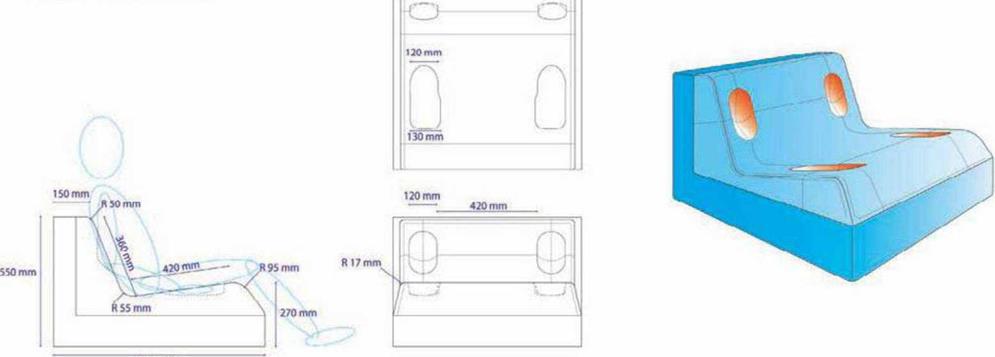The base provided by the furniture manufacturer was to be made in roto-molded plastic. “They sent the drawing and said we had to finish it,” says Crasset, who immediately saw the raw potential in the simple structure. “I decided not to cover the base,” she says. “It is an industrial piece and well-finished. It was quite a big structure, and I realized that I wanted to do the opposite of the arm chair, where there are big soft shapes on each side to hold your arms. I wanted to do the opposite and let the arms fall inside because it’s a more relaxed position; you put your arms along your body to relax. That’s why it’s called a decompression space. To have the body be in this position is to make a situation to relax, to forget, and get imagination on that point.”
For Crasset, design is less about the object itself and more about the space it will inhabit. “In a way, I always start with the context,” she says. “I’m doing a piece for a company, or a specific interior, or a hotel, so you have to deal with atmosphere and how you want people to feel in the space. You always have a context of development with a project.” But with this project, the context and the product became one and the same. “The brief was already very different,” says Crasset. “When I suggested to leave the chair open and keep the structure visible, I thought they would refuse it because it was not the idea. But the opposite happened. They found it very interesting.”
As she began to work out a form for the chair, Crasset spent a lot of time thinking about what it is to rest. “I did some experimentation about the decompression space and how can space can create a kind of restful atmosphere,” she says. “I did some trials about resting with space and it was quite interesting to find the same disposal, but for a domestic application and with the armchair,” she explains. “I did this idea of inverting the armchair. It is a kind of negative armchair. The arms are inside out.” This project also turned Crasset’s usual design interests inside out. “It is something which is very different than other things I do,” she says. “I hate to dictate to people. I prefer to make a base and let people be free to move. With the shape of the armchair, it’s a proposal to rest. It’s a fixed proposal. Usually, I’m working on modularity, movement, not having a product that is dictating something. In a way, this is an invitation to keep quiet. It makes sense.”
The base of the chair is a shell of plastic, available in five different colors: pink, light blue, white, royal blue, and green. The seat is made of molded foam with small pockets where elbows and hands can find a comfortable nest. Contrasting colors of foam accentuate these areas. “The more difficult part was to have a very good shape,” says Crasset. “We had to make a mold for that part
|
0 Above: A technical drawing of the Decompression Space Chair shows the comfortable slant of the seat, as well as the dimensions of the cut outs, which are shaped to reflect and invite the hand and elbow that will be resting there. Credit: Matali Crasset
Left: The base of the Decompression Space chair is fabricated of plastic made in this mold. The manufacturer gave several designers a drawing of a “chassis” and asked them to finish it into a piece of furniture. Credit: FeliceRossi Sri
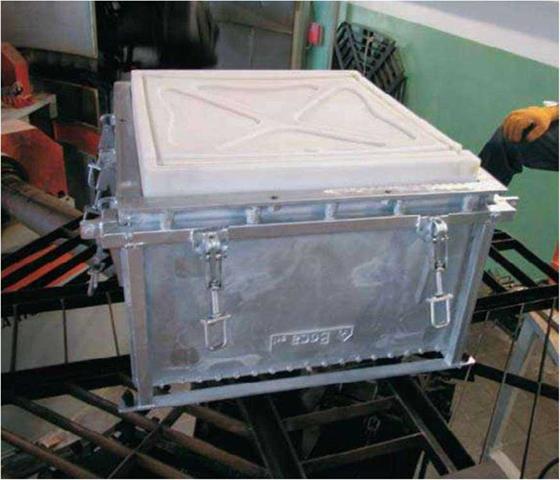
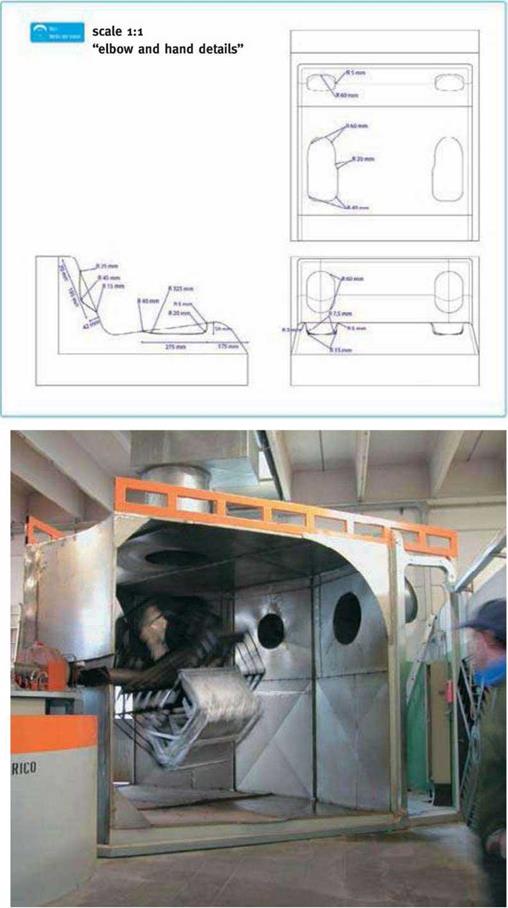 © Right: To create the chair base, raw polyethylene is put into the mold, which is then placed in this machine where it is heated and rotated to spread the raw material evenly inside the mold. Credit: FeliceRossi Sri
© Right: To create the chair base, raw polyethylene is put into the mold, which is then placed in this machine where it is heated and rotated to spread the raw material evenly inside the mold. Credit: FeliceRossi Sri
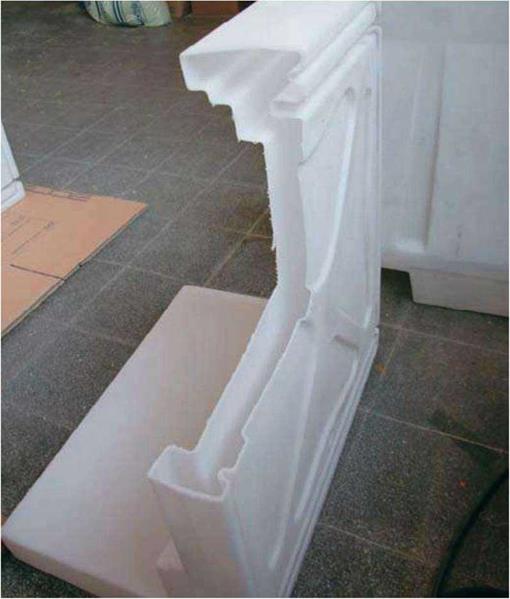
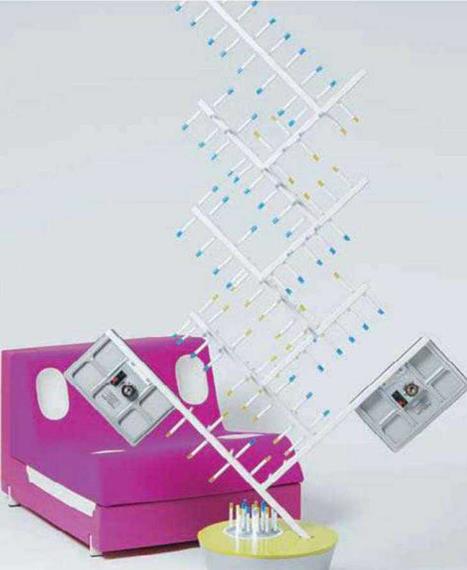
to make sure we get a good cut. The shape inside the cut out part is not just round,” she notes. “It’s shaped like a hand. It goes from wide to narrow to make people think of having their hand there.” According to Crasset, the foam is attached to the plastic with Velcro strips. “So you can take it out,” she says. “You can change the fabric or whatever.” The small contrasting strip between the seat and the plastic base is “where it is elastic for comfort,” she notes.
“Normally,” she says, “this would be made of wood or steel. This project is very light. The molding is very light. There is air inside. You have a very thin layer of plastic and then the foam. It’s empty inside; it’s a closed shape. Only the outline is plastic. It’s strong; it’s enough.” The piece is finished with four small metal feet, also in contrasting colors that further lift and lighten the entire piece off the floor just a bit. Crasset points out that you can put the Decompression Space chairs side by side to create a sofa of any size or seating capacity.
Crasset has also expanded how the chair can be used in other ways. “Here’s a little story,” she says. “I am doing another project, an exhibition about design and the domestic application for sound. I put a remote control where the hand is. You have a database of sound and text and the idea is to mix them, to select sound and text and try to mix them together. The idea was to no longer get music—that is very easy—but what can we do with it, and how do we give it meaning.” At the Abitare il Tempo, an interior design fair in Verona, Italy, Crasset created an entire Decompression room. “We used the same chair,” she says, “and it was green and yellow. The idea was to get a rest, but also to get energy. The color was to give to energy.”
When she considers this inside-out chair, she finds that the self – contained and suggestive nature of the Decompression Space is its most intriguing aspect. “I like the idea that this furniture has its own way of working,” she says. “I don’t care about the shape. The more interesting thing is the attitude it can propose to you. I like to have a product that engages the person. You like it or you don’t, but if you do, you have a deeper relationship with the piece. You have the same mood as the piece of furniture.”
Top: A prototype of the molded piece is cut apart to check the thickness of the plastic. Crasset so liked the finished look of the plastic base that she decided to leave it exposed and simply add a foam seat.
Credit: FeliceRossi Srt
(2) For the MIXtree exhibition, Crasset implanted a remote control into the hand pocket of the Decompression Space. Users manipulate fragments of sound and spoken text to create an interactive music experience. Credit: Patrick Gries
![]()
|
30 DESIGN SECRETS: FURNITURE |
|
The Decompression Space Chair offers shoppers a place to rest in the midst of the Lieu Commun store in Paris. Credit: Patrick Gries
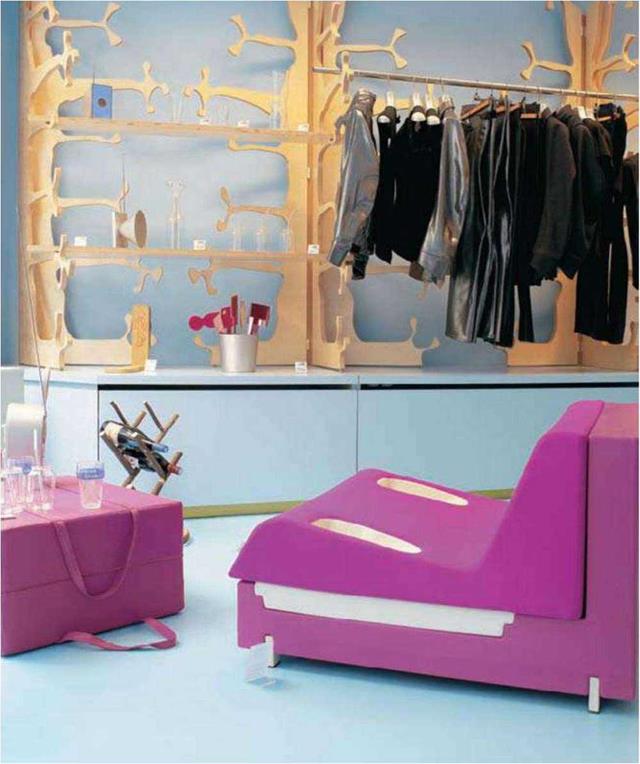
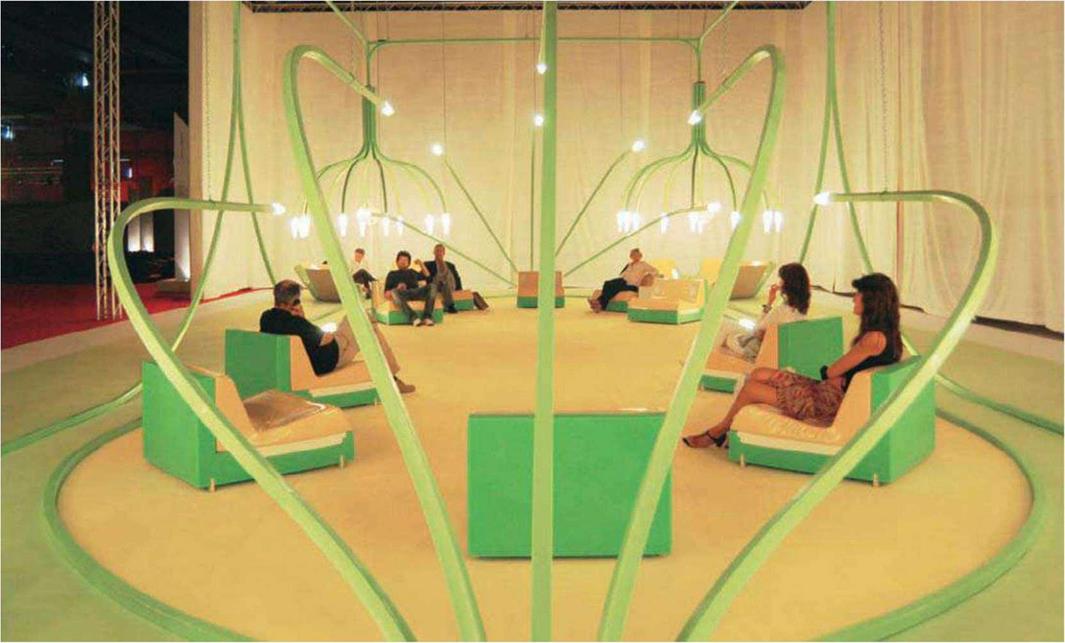 |
Q) At the Abitare il Tempo interior design trade fair in Verona, Italy, Crasset created the Flux 04, an entire decompression room, where the chair shape was to provide rest, even as its color was designed to create energy. Credit: Matali Crasset

